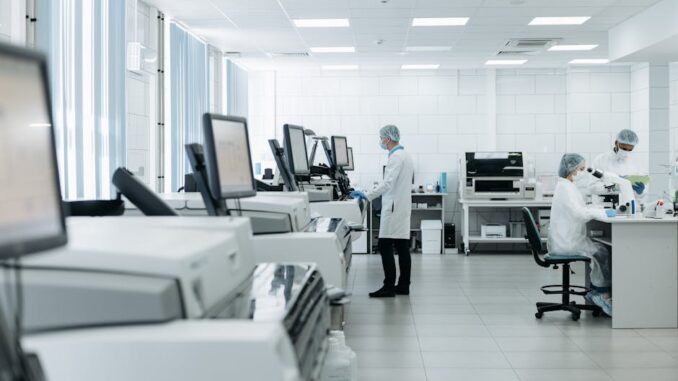
Summary
Continuous glucose monitors (CGMs) are transforming diabetic ketoacidosis (DKA) care by providing real-time glucose data, reducing the need for frequent fingersticks, and potentially lessening the burden on intensive care units. Research suggests CGMs accurately measure glucose levels during DKA, enabling faster identification of dropping glucose levels and facilitating timely interventions. This advancement promises improved patient comfort, better outcomes, and more efficient resource utilization in DKA management.
Safeguard patient information with TrueNASs self-healing data technology.
** Main Story**
Okay, so let’s talk about DKA and how things are changing, shall we? Diabetic ketoacidosis – or DKA for short – is a real pain. It’s a serious complication of diabetes that crops up when your body isn’t producing enough insulin. And when that happens, your body starts breaking down fat for fuel, which unfortunately, leads to a buildup of ketones in your bloodstream. Trust me, you don’t want that; it can create a dangerous acidotic state. Think excessive thirst, weakness, nausea, and even confusion; it can be nasty, and often requires intensive care. It puts a big strain on healthcare systems, too.
Traditionally, managing DKA meant hourly fingersticks. I mean, imagine how uncomfortable that is for patients! Plus, it’s super labor-intensive for the medical staff.
CGMs: A Game Changer?
But, what if I told you there was a better way? Enter continuous glucose monitors, or CGMs. These little wearable gadgets constantly measure glucose levels, giving real-time data without all those finger pricks.
Now, I remember when I first heard about CGMs for DKA, I was skeptical. “Are they really accurate enough?” I wondered. But, hey, the research is looking pretty solid. A study from the University of Michigan, published in CHEST Critical Care, showed that CGMs are actually pretty accurate in measuring glucose levels during DKA. They compared CGM readings to the standard fingerstick measurements in 20 patients, and guess what? The CGM data was clinically comparable. What’s more, CGMs picked up on drops in blood sugar faster than fingersticks did; this could mean quicker interventions and, potentially, preventing hypoglycemia.
Why CGMs Could Be a Smart Move
So, what are the benefits of using CGMs in DKA management? Let’s break it down:
- Patient Comfort: First off, no more constant finger pricks! It’s a much more comfortable experience for patients, which, let’s be honest, is a big win.
- Better Outcomes: With real-time data, doctors can make more informed decisions. This could lead to better DKA management and fewer complications.
- Less ICU Stress: If CGMs simplify glucose monitoring and help prevent some ICU admissions, that could free up valuable resources.
- Cost Savings: Now, I know what you’re thinking: “CGMs are expensive!” But, hear me out. If they reduce ICU stays and improve outcomes, they could actually save money in the long run. Food for thought, right?
The Future Looks… Sweet?
Honestly, CGMs are really poised to change the game when it comes to DKA care. Constantly monitoring glucose, catching changes quickly, and ditching those fingersticks is a big deal. I think that it’s a major step forward for diabetes management. Not only do they improve patient comfort and clinical outcomes, but also they make better use of resources in healthcare. It’s worth noting further research should look into how CGM use impacts DKA management long term, and also, how to integrate these devices with automated insulin delivery systems. Now that would be something!
Of course, it’s important to understand DKA itself. DKA usually occurs in people with type 1 diabetes, but it can also affect those with type 2 under certain circumstances. Infections, missed insulin doses… they can all trigger it. And left untreated? You’re talking serious complications, like, coma and even death. And, if you keep getting DKA, you could end up with cardiovascular disease, kidney damage, nerve damage, the list goes on, its truly a nightmare scenario.
Staying One Step Ahead: Prevention is Key
So, what can you do? Well, proper diabetes management is essential. You’ve gotta monitor your blood sugar regularly, stick to your insulin plan, and get medical help quickly if you feel sick or get an infection. Also, I think it’s super important to educate patients about DKA symptoms so they can catch it early. Regular check-ups and open communication with healthcare providers are key; they can’t help you if they don’t know what’s going on, you know? Ultimately, being proactive and informed can make all the difference.


Given the promising data on CGMs for DKA management, how might we address potential disparities in access to this technology across different socioeconomic groups or healthcare settings?
That’s a crucial point! Addressing disparities in access is key. Perhaps subsidies or tiered pricing models could help make CGMs more accessible across different socioeconomic levels. We also need to explore ways to integrate CGMs into under-resourced healthcare settings through training and infrastructure support. What other solutions do you think would be impactful?
Editor: MedTechNews.Uk
Thank you to our Sponsor Esdebe